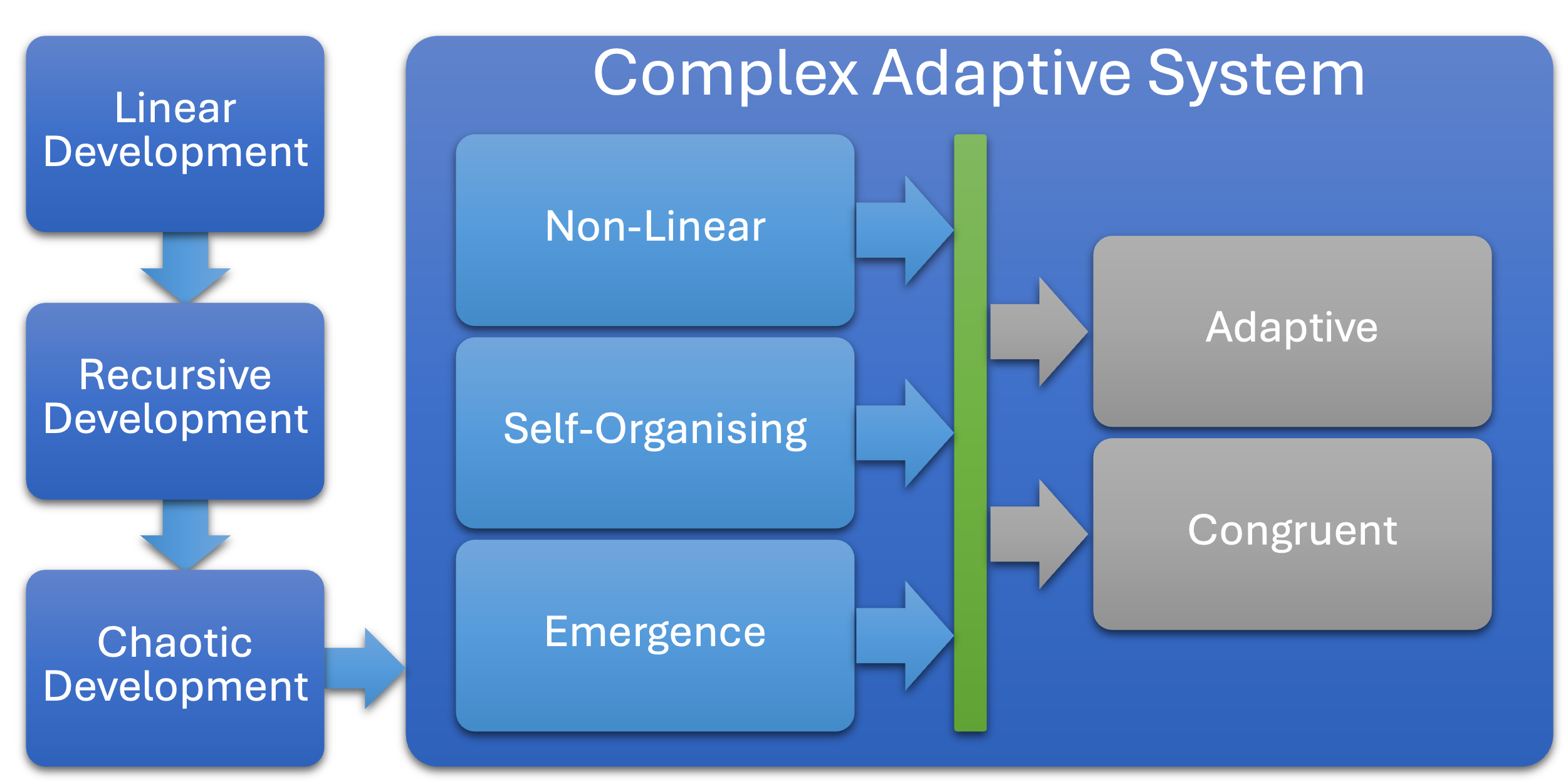A Complex Adaptive System (CAS) is a system composed of many individual components or agents that interact locally with each other, follow simple rules, and adapt their behaviour based on feedback from their environment. These systems exhibit emergent properties, meaning that the system as a whole exhibits behaviours and outcomes that are not predictable from the behaviour of the individual parts. CAS are found in nature, technology, and social systems, and they are characterised by complexity, self-organisation, learning, and adaptation.

Key Characteristics
Emergence
- The overall behaviour of the system emerges from the interactions between agents. This behaviour cannot be predicted by analyzing the individual components in isolation.
- Example: The collective behaviour of ant colonies or the formation of traffic jams.
Adaptation and Learning
- Agents within a CAS can learn and adapt based on feedback from their environment. This enables the system to evolve over time in response to internal or external changes.
- Example: Ecosystems adapt to environmental changes; businesses adapt to market conditions.
Self-Organization
- CAS tend to self-organise without central control or direction. Local interactions between agents lead to the spontaneous emergence of order and structure.
- Example: Social networks or decentralised economies, where order emerges from individual actions without a central plan.
Nonlinearity
- The relationships between agents in CAS are nonlinear, meaning that small changes can lead to disproportionate outcomes, and large changes may have minimal impact.
- Example: The butterfly effect, where a small action in one part of the system causes a large effect elsewhere.
Diversity of Agents
- CAS consist of diverse agents with varying behaviours, roles, or rules. This diversity contributes to the system’s resilience and capacity for adaptation.
- Example: Different species within an ecosystem or employees with diverse skills in an organisation.
Decentralized Control
- There is no central authority controlling the system. Control emerges from the distributed actions and interactions of individual agents.
- Example: The Internet, where decentralised nodes contribute to a functioning global network.
Examples of CAS
- Biological Systems: Ecosystems, immune systems, and the brain.
- Social Systems: Economies, cities, and organisations.
- Technological Systems: The Internet, supply chains, and artificial intelligence networks.
CAS in Strategic Management
- Flexibility and Resilience: Understanding CAS helps organisations design systems that are flexible and resilient, capable of adapting to dynamic environments.
- Innovation and Adaptation: Organisations can foster innovation by allowing decentralised decision-making and encouraging diverse interactions, leading to the emergence of new ideas and strategies.
- Decision-Making: Recognising that outcomes in CAS are often unpredictable encourages adaptive decision-making and real-time learning.
Applications
- Economics and Business: Businesses operate as CAS, where agents (employees, markets, competitors) interact and adapt to changes. Understanding CAS helps businesses design adaptive strategies and foster innovation.
- Environmental Management: Ecosystems function as CAS, and understanding their dynamics is crucial for managing biodiversity and sustainability efforts.

